UAE banks seize the moment
11 April 2024

After a surge in profits in 2023, UAE lenders have a positive outlook for this year. Strong capital buffers are expected to move even higher, while robust liquidity conditions provide a solid base for growing loan books.
The UAE economy’s revival, meanwhile, continues. That will support lenders’ loan quality, with borrowers’ ability to repay loans steadily improving – albeit from a high level of problem loans, which account for an estimated 4-5% of total loans.
The key factor in borrowers’ improved repayment ability is the UAE’s impressive non-oil performance, which has resulted in diminishing corporate problem loans.
With legacy Covid-era challenges now substantially reduced for the UAE private sector, banks’ non-performing loan (NPL) ratios have declined across the board.
Exposure to the property sector, considered a strategic vulnerability for lenders, is not proving problematic. Those developers with indebtedness issues are in the process of settling those.
For example, in December 2023, Dubai-based developer Union Properties announced an AED875m ($238.3m) debt repayment to a local lender, as part of a restructuring of its loans.
According to Moody’s Investors Service, the UAE banks’ coverage ratio, defined as loan-loss reserves as a proportion of problem loans, reached 103% in 2023 – meaning the existing stock of property-related loans is now fully covered.
The ratings agency said this level is comparable to other highly rated GCC banking systems, providing a healthy extra layer of protection to core equity against expected losses and strengthening total loss absorption capacity.
However, there is a limit to the level at which NPLs will decline because of large legacy exposures and large restructurings emanating from previous cycles, where there was volatility in the non-oil space.
Last year, non-oil growth in the UAE was around 5%. That drove greater, repayment capacity from borrowers, which was very visible in the headline NPL ratios of the banks that pretty much declined on average, says Badis Shubailat, a bank analyst at Moody’s Investors Service.
“Still, there is some form of floor level to this decline because of the legacy exposures, and large restructurings that emanated from the previous credit cycles, during which we saw volatility in the non-oil space.”
This structural feature keeps the UAE at a disadvantage from a comparison standpoint to the other markets regarding asset quality indicators.
The broader profit picture in the UAE underscores the benign conditions confronting banks. The combined net income of all UAE banks increased by 54.1% in year-on-year terms in 2023, to AED76.9bn ($20.9bn).
High interest rates and supportive operating conditions ensured that asset yields (at 6.0% according to Moody’s) outpaced the cost of funding (3.7%). Banks managed to preserve low-cost current and savings accounts (CASA) and supported wider margins at 2.6% (compared to 2.2% in 2022).
Profit boost
Results from the largest UAE lenders show a massive profitability boost last year. The country’s largest lender by assets, First Abu Dhabi Bank (FAB), saw 2023 net profit reach $4.5bn, an increase of 56% on an underlying basis compared to 2022.
Total assets increased 5% to $318bn. Dubai’s largest bank, Emirates NBD, reported a 65% increase in profit last year to AED21.5bn ($5.9bn), with a 16% increase in its asset base propelled by strong CASA increases.
According to Moody’s, the four largest banks – FAB, ENBD, Abu Dhabi Commercial Bank and Dubai Islamic Bank, which together accounted for around 74% of total UAE banking assets as of December 2023 – reported a combined net profit of $14.3bn in 2023, up from $9.6bn in 2022.
Analysts expect sustained profitability in 2024, given widening net interest margins and improving credit growth. Even anticipated interest rate cuts from the US Federal Reserve are unlikely to hit UAE banks hard, especially as these are only due to kick in in the second half of this year. Moreover, any interest rate reductions will likely be gradual.
These improving metrics prompted Moody’s in mid-March to change the outlook for the UAE banking sector in 2024 to positive from stable.
The profitability improvement will also support banks’ capital ratios. Fitch Ratings expects the average CET1 ratio (post-dividend payments) to remain in the 13.5%–14% range, as the impact of lending growth will be broadly compensated by internal capital generation. Operating profits provide a solid cushion against any increase in the cost of risk, said the ratings agency.
That UAE banks are mainly funded by low-cost CASA deposits – considered ‘sticky’ – is a positive for the sector’s liquidity position. Last year, noted Moody’s, customer deposits made up 78% of UAE banks’ funding base. In contrast, the reliance on market funding is a moderate 17.7% of tangible banking assets.
Funding positions are supported by higher deposits from government-related entities (GREs), whose revenue performance has been sufficiently strong to allow them to deleverage to a greater degree.
Last year’s aggregate deposit performances from the top 10 banks, as reported by consultancy Alvarez and Marsal, showed that deposits grew 13.4% in 2023, while aggregate loans and advances increased by only 9%. Consequently, the loan-to-deposit ratio for these banks slipped 3.1 percentage points to 74.9%.
Some banks’ bottom lines face challenges. In March of this year, Dubai announced a 20% annual tax on foreign banks operating there, excluding those based in the Dubai International Financial Centre (DIFC). However, the Dubai authorities said the corporate tax rate will be deducted from the annual tax that foreign banks pay.
Volatile sectors
There remain vulnerabilities related to the construction and contracting sectors, which Moody’s notes are more volatile. It expects pockets of risks in the small- to medium-sized business segments because of high interest rates, particularly for smaller banks.
Exposure to foreign economies such as Turkiye and Egypt is more of a risk for the larger UAE banks.
“There is a foreign exposure story with large UAE banks, mainly in markets that have strong trade ties with the region, namely Egypt and Turkiye,” says Shubailat. “Those open avenues for growth and profitability diversification, but also present relatively less benign and more challenging environments.”
Such risks should easily be absorbed in the grand scheme of things. With overall conditions remaining supportive and healthy profits being generated, the UAE’s banks will look to expand loan books and capture the full growth potential of a vibrant domestic market.
The latest news and analysis on the UAE includes:
 > Non-oil activity underpins UAE economy
> Non-oil activity underpins UAE economy
> Dubai real estate boosts construction sector
> UAE and Kenya launch digital corridor initiative
> UAE in talks to invest in European nuclear power infrastructure
> Abu Dhabi’s local content awards surge to $12bn
> Dubai tunnels project dominates UAE pipeline
> UAE marks successful power project deliveries
> UAE is dropped from financial grey list
Exclusive from Meed
-
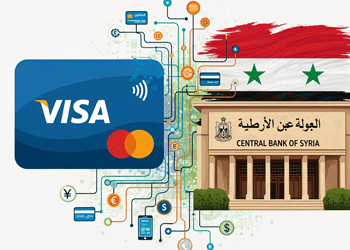 Visa agrees to support digital payments in Syria
Visa agrees to support digital payments in Syria5 December 2025
-
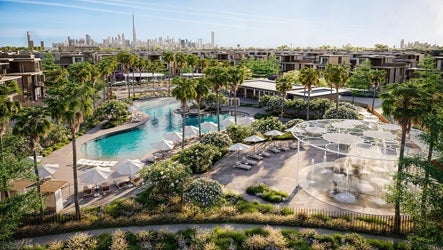 Meraas announces next phase of Nad Al-Sheba Gardens
Meraas announces next phase of Nad Al-Sheba Gardens5 December 2025
-
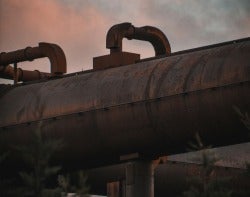 Frontrunner emerges for Riyadh-Qassim IWTP
Frontrunner emerges for Riyadh-Qassim IWTP5 December 2025
-
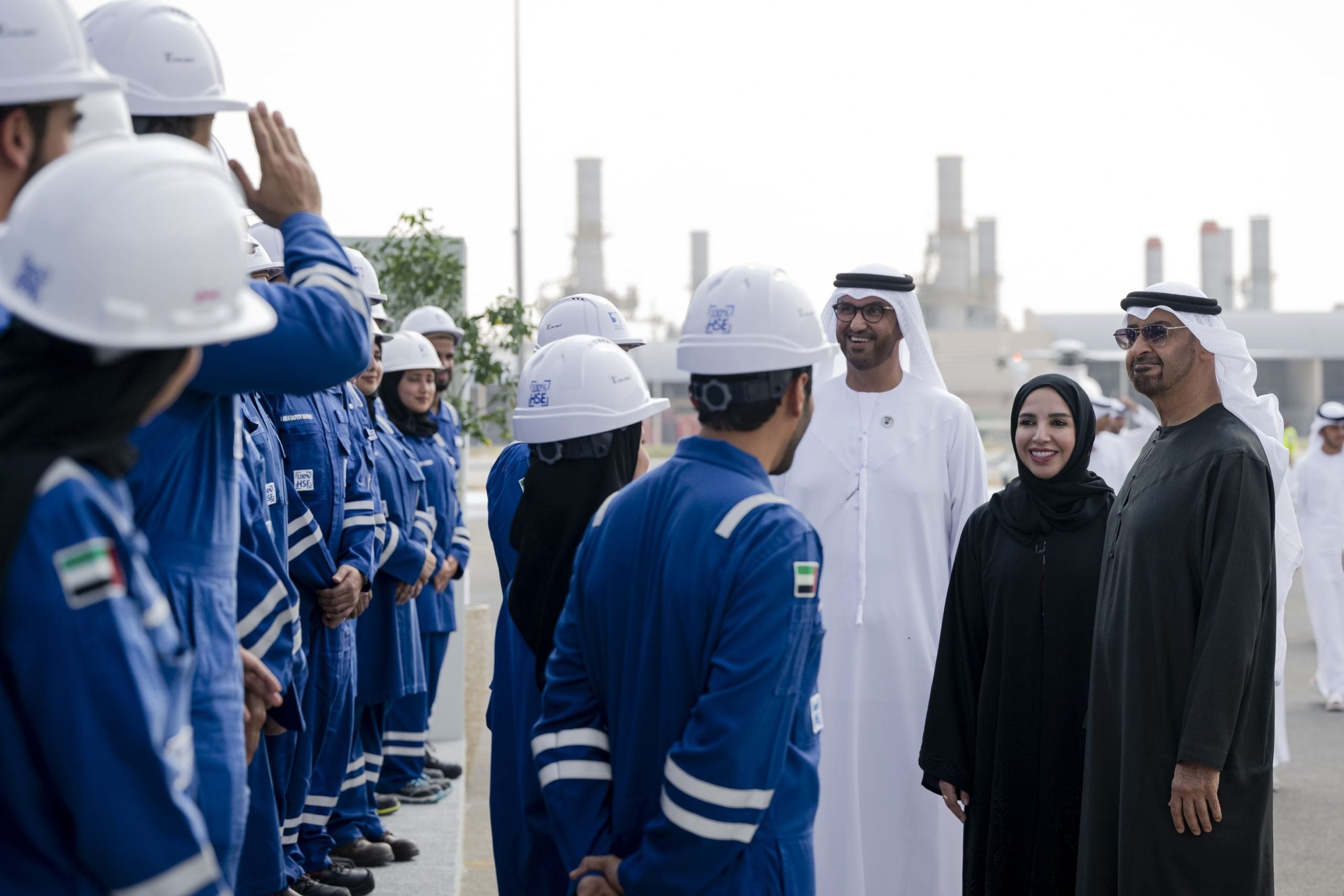 Adnoc creates new company to operate Ghasha concession
Adnoc creates new company to operate Ghasha concession5 December 2025
-
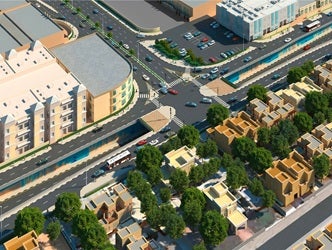 Dubai RTA announces Al-Wasl road development project
Dubai RTA announces Al-Wasl road development project5 December 2025
All of this is only 1% of what MEED.com has to offer
Subscribe now and unlock all the 153,671 articles on MEED.com
- All the latest news, data, and market intelligence across MENA at your fingerprints
- First-hand updates and inside information on projects, clients and competitors that matter to you
- 20 years' archive of information, data, and news for you to access at your convenience
- Strategize to succeed and minimise risks with timely analysis of current and future market trends

Related Articles
-
 Visa agrees to support digital payments in Syria
Visa agrees to support digital payments in Syria5 December 2025
Visa and the Central Bank of Syria have agreed on a strategic roadmap that will allow the US-based card and digital payments company to begin operations in Syria and support the development of a modern digital payments system.
Under the agreement, Visa will work with licensed Syrian financial institutions under a phased plan to establish a secure foundation for digital payments.
The early stages will involve Visa supporting the central bank in issuing Europay, Mastercard and Visa (EMV)-compliant payment cards and enabling tokenised digital wallets – bringing the country in line with internationally interoperable standards.
Visa will also provide access to its platforms, including near-field communication (NFC) and QR-based payments, invest in local capacity building and support local entrepreneurs seeking to develop solutions leveraging Visa’s global platform.
“A reliable and transparent payment system is the bedrock of economic recovery and a catalyst that builds the confidence required for broader investment to flow into the country,” noted Visa’s senior VP for the Levant, Leila Serhan. “This partnership is about choosing a path where Syria can leapfrog decades of legacy infrastructure development and immediately adopt the secure, open platforms that power modern commerce.”
The move marks one of the most significant steps yet in Syria’s slow and uneven return to the formal global financial system and carries implications that reach beyond just payments technology.
It lays the groundwork for overturning more than a decade of financial isolation in which Syria has operated largely outside global banking and settlement networks.
Visa’s entry will not erase all existing barriers – as many restrictions remain in force and will continue to shape what is practically possible – but its support signals a reopening of channels that could smooth Syria’s reintegration into financial networks.
The involvement of the US-based payments provider is also a further tacit sign of the US government’s enthusiastic bear hug of the new post-Assad Syrian government under President Ahmed Al-Sharaa.
For investors assessing long-term opportunities, the presence of a globally recognised payments operator will provide reassurance that Syria’s financial system is returning to international norms, and the security and transparency that comes with it.
https://image.digitalinsightresearch.in/uploads/NewsArticle/15207198/main.gif -
 Meraas announces next phase of Nad Al-Sheba Gardens
Meraas announces next phase of Nad Al-Sheba Gardens5 December 2025
Dubai-based real estate developer Meraas Holding, which is part of Dubai Holding, has announced the eleventh and final phase of its Nad Al-Sheba Gardens residential community in Dubai.
It includes the development of 210 new villas and townhouses and a school, which will be located at the northwest corner of the development.
The latest announcement follows Meraas awarding a AED690m ($188m) contract for the construction of the fourth phase of the Nad Al-Sheba Gardens community in May, as MEED reported.
The contract was awarded to local firm Bhatia General Contracting.
The scope of the contract covers the construction of 92 townhouses, 96 villas and two pool houses.
The contract award came after Dubai-based investment company Shamal Holding awarded an estimated AED80m ($21m) contract to UK-based McLaren Construction last year for the Nad Al-Sheba Gardens mall.
The project covers the construction and interior fit-out of a two-storey mall, covering an area of approximately 12,600 square metres.
The UAE’s heightened real estate activity is in line with UK analytics firm GlobalData’s forecast that the construction industry in the country will register annual growth of 3.9% in 2025-27, supported by investments in infrastructure, renewable energy, oil and gas, housing, industrial and tourism projects.
The residential construction sector is expected to record an annual average growth rate of 2.7% in 2025-28, supported by private investments in the residential housing sector, along with government initiatives to meet rising housing demand.
https://image.digitalinsightresearch.in/uploads/NewsArticle/15206904/main.jpg -
 Frontrunner emerges for Riyadh-Qassim IWTP
Frontrunner emerges for Riyadh-Qassim IWTP5 December 2025

Saudi Arabia’s Vision Invest has emerged as frontrunner for the contract to develop the Riyadh-Qassim independent water transmission pipeline (IWTP) project, according to sources.
State water offtaker Saudi Water Partnership Company (SWPC) is preparing to award the contract for the IWTP "in the coming weeks", the sources told MEED.
The project, valued at about $2bn, will have a transmission capacity of 685,000 cubic metres a day. It will include a pipeline length of 859 kilometres (km) and a total storage capacity of 1.59 million cubic metres.
In September, MEED reported that bids had been submitted by two consortiums and one individual company.
The first consortium comprises Saudi firms Al-Jomaih Energy & Water, Al-Khorayef Water & Power Technologies, AlBawani Capital and Buhur for Investment Company.
The second consortium comprises Bahrain/Saudi Arabia-based Lamar Holding, the UAE's Etihad Water & Electricity (Ewec) and China’s Shaanxi Construction Installation Group.
The third bid was submitted by Saudi Arabia's Vision Invest.
It is understood that financial and technical bids have now been opened and Vision Invest is likely to be awarded the deal.
The Riyadh-based investment and development company made a "very aggressive" offer, one source told MEED.
In November, the firm announced it had sold a 10% stake in Saudi Arabia-based Miahona as part of a strategy to reallocate capital "towards new and diversified investments".
The company did not disclose which projects the capital might be reallocated towards.
As MEED recently reported, Vision Invest is also bidding for two major packages under Dubai's $22bn tunnels programme in a consortium with France's Suez Water Company.
The Riyadh-Qassim transmission project is the third IWTP contract to be tendered by SWPC since 2022.
The first two are the 150km Rayis-Rabigh IWTP, which is under construction, and the 603km Jubail-Buraydah IWTP, the contract for which was awarded to a team of Riyadh-based companies comprising Al-Jomaih Energy & Water, Nesma Group and Buhur for Investment Company.
Like the first two IWTPs, the Riyadh-Qassim IWTP project will be developed using a 35-year build-own-operate-transfer contracting model.
Commercial operations are expected to commence in the first quarter of 2030.
https://image.digitalinsightresearch.in/uploads/NewsArticle/15206609/main.jpg -
 Adnoc creates new company to operate Ghasha concession
Adnoc creates new company to operate Ghasha concession5 December 2025
Register for MEED’s 14-day trial access
The board of directors of Abu Dhabi National Oil Company (Adnoc Group) has approved the establishment of a new company to operate the Ghasha offshore sour gas concession in Abu Dhabi waters.
The decision to create the new entity, to be called Adnoc Ghasha, was taken during a recent meeting of Adnoc Group’s board in Abu Dhabi, which was chaired by Sheikh Mohamed Bin Zayed Al-Nahyan, UAE President and Ruler of Abu Dhabi.
Adnoc Group owns and operates the Ghasha concession, holding the majority 55% stake. The other stakeholders in the asset are Italian energy major Eni with a 25% stake, Thailand’s PTTEP Holding, which holds a 10% interest, and Russia’s Lukoil, owning the remaining 10% stake.
The Ghasha concession consists of the Hail and Ghasha fields, along with the Hair Dalma, Satah al-Razboot (Sarb), Bu Haseer, Nasr, Shuwaihat and Mubarraz fields.
Adnoc expects total gas production from the concession to ramp up to more than 1.8 billion cubic feet a day (cf/d) before the end of the decade, along with 150,000 barrels a day of oil and condensates. This target will mainly be achieved through the Hail and Ghasha sour gas development project.
In October 2023, Adnoc and its partners awarded $16.94bn of engineering, procurement and construction (EPC) contracts for its Hail and Ghasha project – the biggest capital expenditure made by the Abu Dhabi energy company on a single project in its history.
Adnoc awarded the onshore EPC package to Italian contractor Tecnimont, while the offshore EPC package was awarded to a consortium of Abu Dhabi’s NMDC Energy and Italian contractor Saipem.
The $8.2bn contract relates to EPC work on offshore facilities, including facilities on artificial islands and subsea pipelines.
The Hail and Ghasha development will also feature a plant that will capture and purify carbon dioxide (CO2) emissions for sequestration (CCS), in line with Adnoc’s committed investment for a carbon capture capacity of almost 4 million tonnes a year (t/y). The CO2 recovery plant will have a total capacity to capture and store 1.5 million t/y of emissions from the Hail and Ghasha scheme.
Prior to reaching the final investment decision on the Hail and Ghasha project in 2023, the Ghasha concession partners, led by Adnoc, awarded two EPC contracts worth $1.46bn in November 2021 to execute offshore and onshore EPC works on the Dalma gas development project. The project will enable the Dalma field to produce about 340 million cf/d of natural gas.
https://image.digitalinsightresearch.in/uploads/NewsArticle/15206382/main2754.jpg -
 Dubai RTA announces Al-Wasl road development project
Dubai RTA announces Al-Wasl road development project5 December 2025
Register for MEED’s 14-day trial access
Dubai’s Roads & Transport Authority (RTA) has announced the Al-Wasl Road upgrade project, spanning 15 kilometres (km) from the intersection with Umm Suqeim Street to the junction with 2nd December Street.
The scheme includes upgrading six intersections – Al-Thanya, Al-Manara, Umm Al-Sheif, Umm Amara, Al-Orouba and Al-Safa streets – along with upgrading Al-Thanya Street and constructing five tunnels totalling 3.8km.
A new tunnel will be built at the intersection with Al-Manara Street. It will consist of three lanes and split into two routes: two lanes from Sheikh Zayed Road to Jumeirah Street and two lanes from Sheikh Zayed Road to Umm Suqeim Street, with a total capacity of 4,500 vehicles per hour.
The project also includes a 750m-long tunnel on Umm Al-Sheif Street, comprising two lanes from Sheikh Zayed Road to Jumeirah Street, accommodating up to 3,200 vehicles per hour.
A tunnel will be constructed at the intersection of Al-Wasl Road with Umm Amara Street, featuring two lanes in each direction, with a total length of 700m and a combined capacity of 6,400 vehicles per hour.
The road will also be widened from two to three lanes in each direction.
The project is expected to reduce travel times along Al-Wasl Road by 50% and increase capacity from 8,000 to 12,000 vehicles per hour in both directions.
Planning for growth
In March 2021, the government launched the Dubai 2040 Urban Master Plan. Its launch referenced studies indicating that the emirate’s population will reach 5.8 million by 2040, up from 3.3 million in 2020. The daytime population is set to increase from 4.5 million in 2020 to 7.8 million in 2040.
In December 2022, Sheikh Mohammed Bin Rashid Al-Maktoum, Vice President and Prime Minister of the UAE and Ruler of Dubai, approved the 20-Minute City Policy as part of the second phase of the Dubai 2040 Urban Master Plan.
In addition to the road projects, the RTA’s Dubai Metro Blue Line extension forms part of Dubai’s plans to improve residents’ quality of life by cutting journey times, as outlined in the policy.
The policy aims to ensure that residents can meet 80% of their daily requirements within a 20-minute journey time, on foot or by bicycle. This goal will be achieved by developing integrated service centres with all necessary facilities and by increasing population density around mass transit stations.
https://image.digitalinsightresearch.in/uploads/NewsArticle/15205950/main.jpg



